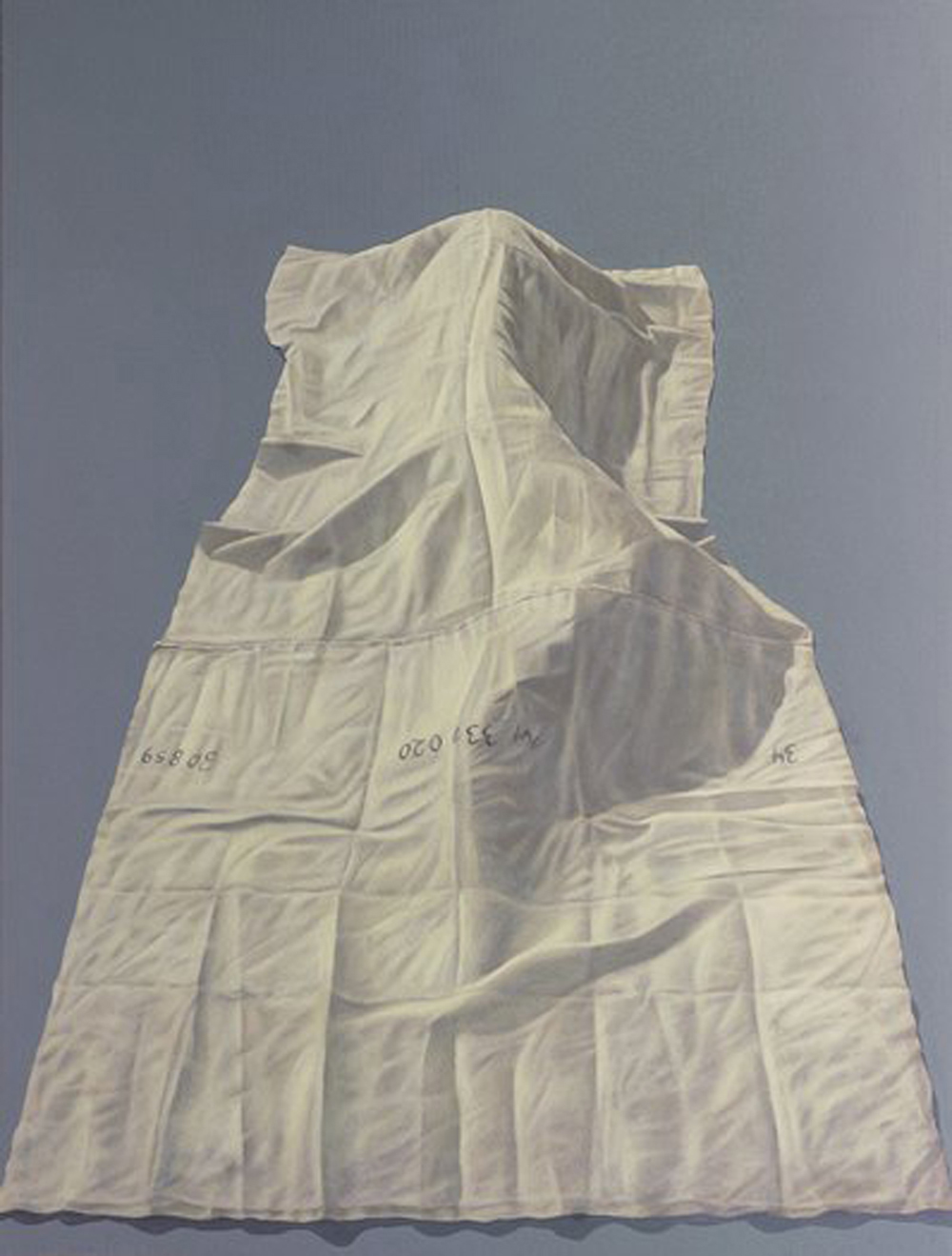canvas series / triptych II
̶ The second triptych was made directly after completing the first, but the position of the canvas changes. Instead of the canvas hanging from a frame it is now lying free within the space.
The feet have disappeared as well and the canvas imitates the shape of a person underneath it, although it is not really clear if it is a human body. In this second triptych it is the canvas itself, appearing in different shapes, that provides diversity. The canvas seems to be moving through the pictorial space. These “rambling” movements combined with the various “fillings” have their foundations in stagings that took place previously, in his studio, and were recorded photographically by the artist.
The canvas seems like a cloth or a blanket now, and it appears to have completely removed itself from its function as a painting ground. Rafi “inherited” this canvas from the Russian painter Lubodar Mossora, and before it became the subject of his painting he used as a curtain it for a long time.
A fusion of materials and subject
The monochrome background means that there is no spatial depth to his paintings, everything takes place on the foremost level of the picture. The canvas is able to display itself in a variety of ways on this plain surface and the spatial reduction allows complete concentration on the subject matter. The space itself remains unclear, it becomes a non-room, an un-place. Space and time are intangible.
An invisible space
is created, a space covered by the canvas itself. Nine lengths of flat canvas are attached to the upper wooden frame, and fall evenly downwards, only in the lower area is some movement which allows a small view through. Theory and practice have followed the idea of mimesis, creating the illusion of nature, since the time of classical antiquity.
Triptych II, Oil on canvas, 2000, each: 200 x 150 cm


